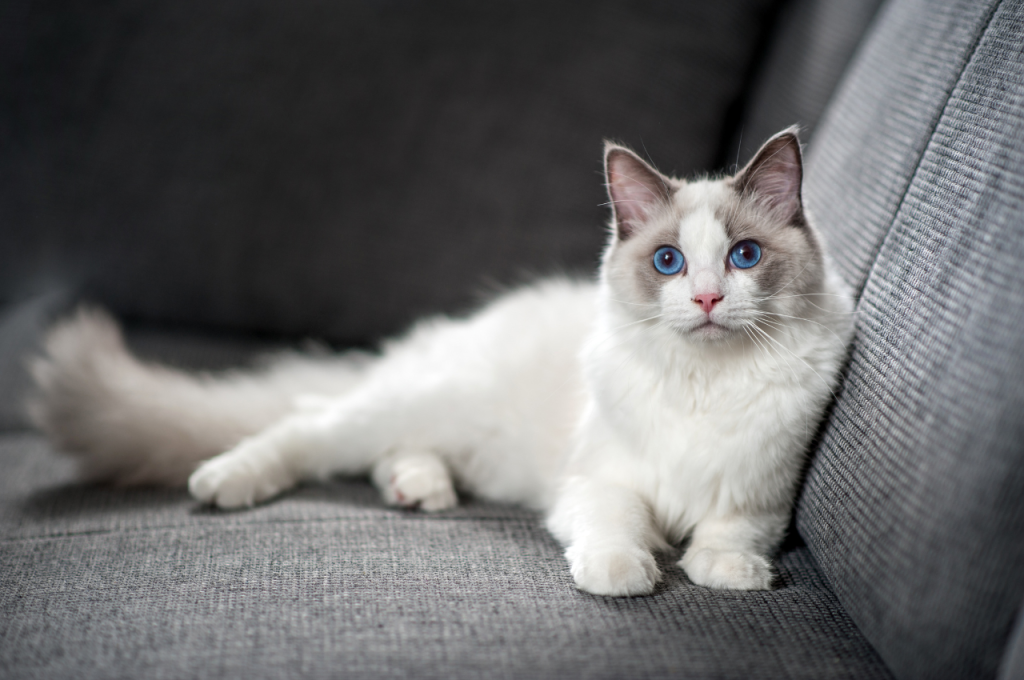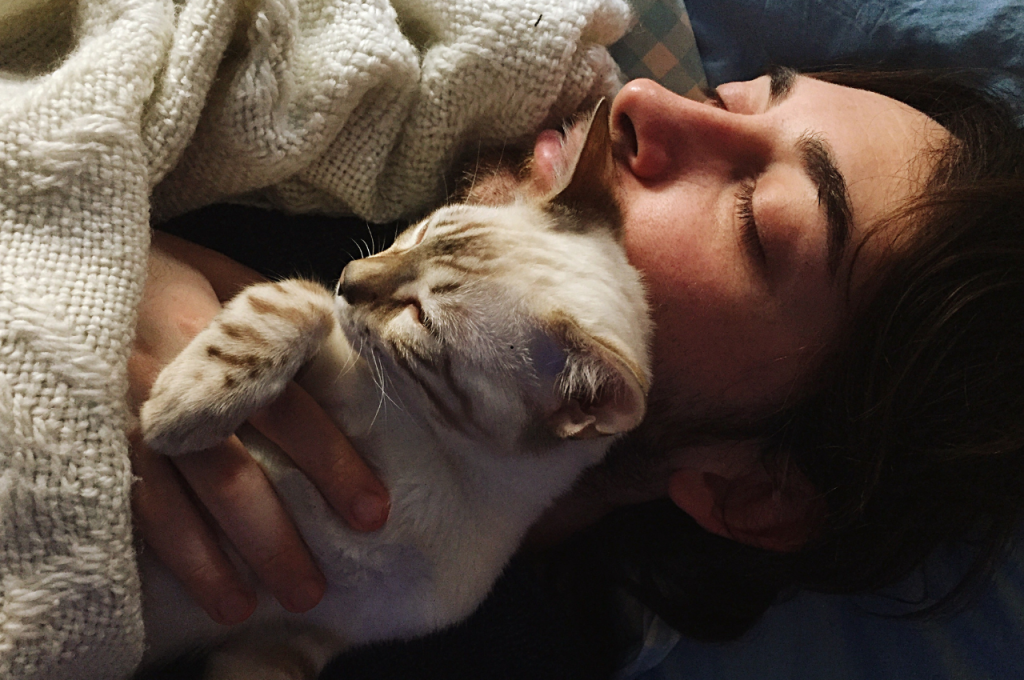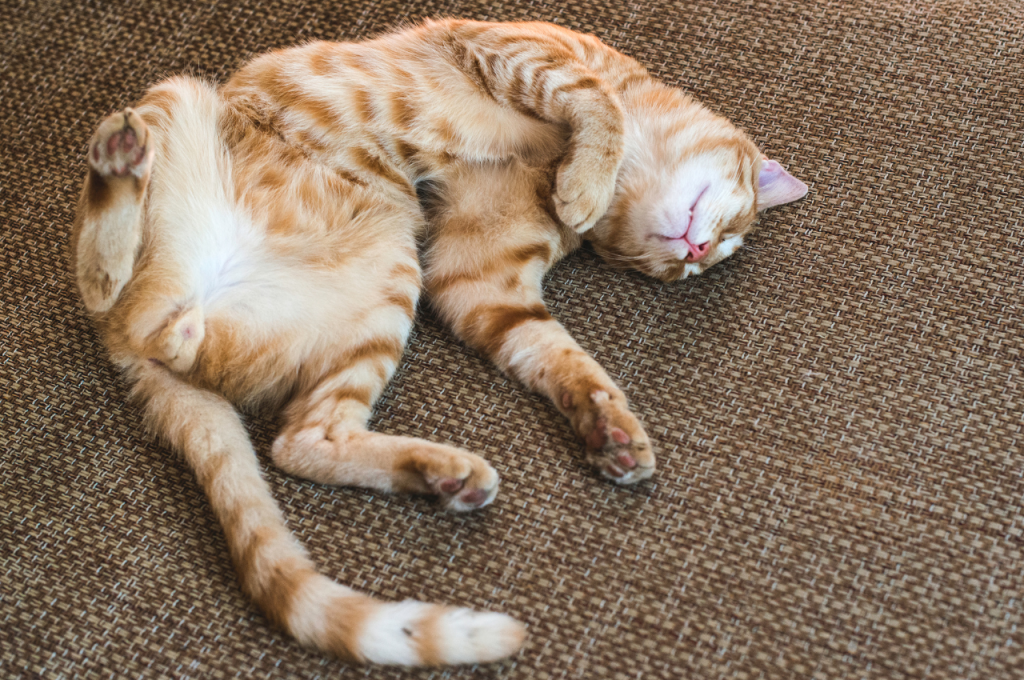Typical behavior in cats includes grooming, hunting, sleeping, and territorial marking. Cats are known for their independence and curiosity, often displaying playfulness and affection towards their owners.
They are also known to exhibit behaviors like kneading, purring, and meowing to communicate their needs and emotions effectively. Understanding these behaviors can help cat owners provide appropriate care and create a harmonious environment for their feline companions. By observing and responding to their cat’s behavior, owners can strengthen their bond and ensure a happy and healthy relationship with their pets.
Decoding Feline Behavior
Cats are enigmatic creatures, often displaying behaviors that can be confusing to their human companions. Understanding typical cat behavior is essential for building a strong and harmonious bond with your feline friend. By decoding their body language, vocalizations, and common actions, you can gain valuable insights into your cat’s emotions and needs.

Common Cat Actions
Cats exhibit a variety of common actions that convey important messages. Purring is a sign of contentment and relaxation while kneading, a rhythmic motion with their paws, that harkens back to kittenhood and signifies comfort. Scratching is a natural behavior for cats and helps them maintain their claws, mark their territory, and stretch their muscles.
Body Language and Vocalization
A cat’s body language and vocalizations offer valuable clues about their state of mind. Erect ears indicate alertness, while flattened ears signal fear or aggression. A tail held high demonstrates confidence, while a fluffed-up tail suggests agitation. Meowing is a form of communication, with different tones conveying various messages, such as demanding attention, expressing discomfort, or seeking companionship.
The Hunter Instinct
Cats have a natural hunting instinct, which is evident in their behavior. They tend to stalk their prey, pounce on it, and then play with it before finally killing it. This behavior is typical in all cats, whether they are domestic or wild.
Stalking and Pouncing
Cats have an innate ability to stalk and pounce, which is a key characteristic of their hunting behavior. This behavior is deeply rooted in their evolutionary history as predators. When a cat is stalking its prey, it will typically move with slow and deliberate steps, using its keen senses to track the movement of its target. The cat will then crouch low to the ground, tail twitching with anticipation, before launching itself forward in a swift and precise pounce. This behavior is not only a display of the cat’s natural instincts but also serves as a form of exercise and mental stimulation.
Playful Predatory Behavior
Play is an important aspect of a cat’s behavior, and it often mimics their hunting instincts. Cats will engage in playful predatory behavior, especially during their younger years. This behavior includes chasing after moving objects, such as toys or even shadows, and swatting at them with their paws. This playful behavior allows cats to practice their hunting skills and provides them with much-needed mental and physical stimulation. It is not uncommon for cats to exhibit this behavior well into adulthood, as it remains a natural part of their instinctual repertoire.
To engage in playful predatory behavior, cats may also engage in mock hunting scenarios. They may hide behind objects, stalk their owners, or engage in a game of hide-and-seek. This behavior is an excellent way for cats to stay entertained and fulfill their natural hunting instincts in a safe and controlled environment.
Summary
The hunter instinct in cats is a fascinating aspect of their behavior. Stalking and pouncing are key components of their hunting behavior, allowing them to exhibit their natural instincts and provide mental and physical stimulation. Playful predatory behavior, such as chasing and swatting, allows cats to practice their hunting skills and engage in interactive play. Understanding and appreciating a cat’s hunter instinct can help us provide them with an enriching and fulfilling environment. So, the next time you see your cat in hunting mode, embrace their natural instincts and provide them with opportunities for play and exploration.
Territorial Tendencies
When it comes to cats, understanding their territorial tendencies is crucial for cat owners. Territorial tendencies are a natural behavior in cats that stem from their wild ancestors. This behavior is driven by a need to establish and defend their territory, ensuring their safety and access to resources.
Marking Territory
Cats have a strong instinct to mark their territory, often through scent marking. They do this by rubbing their face against objects, spraying urine, or scratching surfaces. This behavior serves to establish their presence and create a familiar scent in their environment. Understanding this behavior can help cat owners manage and accommodate their cat’s natural tendencies.
Reactions to New Environments
When introduced to a new environment, cats may exhibit stress or anxiety due to unfamiliar territory. This can lead to behaviors such as hiding, excessive grooming, or avoidance. Providing a safe space and a gradual introduction to the new environment can help alleviate their stress and facilitate a smoother transition.
Social Interactions
Cats are known for their independent nature, but they are also social creatures that engage in various forms of social interactions. Understanding their typical behavior in terms of social interactions can help you build a stronger bond with your feline friend and ensure a harmonious environment. This section explores two key aspects of a cat’s social interactions: bonding with humans and interactions with other animals.
Bonding with Humans
Cats have the ability to form deep and meaningful bonds with their human companions. While each cat has its own unique personality, there are some common behaviors that indicate a strong bond:

- Head Butting: Cats often express affection by gently bumping their heads against their humans. This behavior, known as “bunting,” is a sign of trust and can be seen as a cat’s way of marking their human as part of their territory.
- Purring: A cat’s purring is not only a soothing sound but also a way of expressing contentment and trust. When a cat purrs while being petted or sitting close to their human, it is a clear sign of their bond.
- Kneading: When a cat kneads their paws against a soft surface, it is reminiscent of their nursing behavior as a kitten. This action is often accompanied by a relaxed and content expression, indicating a strong bond.
Interactions with other Animals
Cats are known for their territorial nature, which can influence their interactions with other animals. While some cats may be more tolerant and open to socializing with other animals, others may prefer to keep their distance. Here are a few common behaviors that cats exhibit when interacting with other animals:
- Sniffing: When cats encounter other animals, they often engage in sniffing to gather information and assess the situation. This behavior helps them determine whether the other animal is a potential friend or a potential threat.
- Body Language: Cats use their body language to communicate their intentions and emotions. When interacting with other animals, they may display signs of aggression, such as hissing, growling, or arching their back, to establish boundaries and protect their territory.
- Playful Behavior: In some cases, cats may engage in playful interactions with other animals, especially if they have been raised together or have a friendly relationship. Playful behaviors can include chasing, pouncing, and wrestling, which serve as a form of exercise and social bonding.
Understanding the typical behavior of cats in social interactions can help you create a positive and enriching environment for your feline companion. By recognizing their bonding behaviors with humans and their interactions with other animals, you can foster a strong and harmonious relationship with your cat.
Communication Cues
Understanding Meows
Cats communicate through various types of meows, each conveying different messages.
- Short meows may indicate a greeting or a request for attention.
- Long, plaintive meows might signal discontent or hunger.
- Multiple rapid meows are often an expression of excitement.
Tail Movements and Meanings
Cats’ tails are like a barometer of their mood, with different movements signifying distinct emotions.
- A straight, upright tail typically means the cat is feeling friendly.
- A puffed-up tail indicates fear or aggression.
- A twitching tail may signal irritation or excitement.
Comfort Seeking Habits
Cats exhibit comfort-seeking habits through kneading, purring, and seeking cozy spots. These behaviors reflect their need for security and relaxation, showcasing their natural instincts for comfort and warmth.
Seeking Warmth and Coziness
Cats are known for their comfort-seeking habits, and one of the ways they achieve this is by seeking warmth and coziness. You may have noticed your cat curling up in a sunny spot or snuggling under a blanket. This behavior is not just a matter of preference; it is also instinctual. As descendants of wild cats, domestic cats have retained the need for warmth and shelter. In the wild, cats would seek out warm, protected areas to rest and sleep, and this behavior has carried over to their domesticated counterparts.
Kneading and Its Significance
Another comfort-seeking behavior you may have observed in your cat is kneading. Kneading is when a cat rhythmically pushes their paws in and out on a soft surface, such as a blanket or their owner’s lap. This behavior is thought to be a leftover instinct from when kittens knead their mother’s mammary glands to stimulate milk production. Kneading is a sign that your cat is feeling content and relaxed. It is often accompanied by purring and can be a bonding experience between the cat and the owner. Some cats may also knead as a way to mark their territory, as the scent glands in their paws release pheromones onto the surface they are kneading.
Cats have a variety of comfort-seeking habits, including seeking warmth and coziness, and kneading. These behaviors are not just preferences but are also instinctual and can provide comfort and relaxation for your feline friend. Understanding and accommodating these habits can help strengthen the bond between you and your cat.
Eating Etiquette
Cats have their own set of eating etiquette, which can vary from one feline to another. Understanding typical eating behaviors in cats can help owners provide the best care and create a harmonious feeding routine. Here’s a look at some common eating habits and behaviors in cats, including picky eating and the debate between grazing and scheduled feeding.
Picky Eating Behaviors
Cats are known for their discerning palates, and picky eating behaviors are not uncommon. Some cats may refuse certain types of food, while others may show interest in a particular brand or flavor. This behavior can stem from a variety of factors, including texture, smell, and previous feeding experiences. It’s important for cat owners to be patient and understanding when dealing with picky eating, and to work with their veterinarian to find a suitable diet for their feline friend.
Grazing Vs. Scheduled Feeding
The debate between grazing and scheduled feeding is a common topic among cat owners. Grazing refers to leaving food out for cats to eat at their leisure, while scheduled feeding involves providing set meals at specific times of the day. Both approaches have their pros and cons, and the best option may depend on the individual cat and their specific needs. Some cats thrive on a grazing-style feeding routine, while others may benefit from the structure of scheduled meals. It’s important to consider factors such as the cat’s age, health, and activity level when deciding on a feeding schedule.
Sleeping Patterns
Cats are known for their unique sleeping patterns, which can vary based on their age, lifestyle, and environment. Understanding a cat’s sleeping habits can provide insights into their overall well-being and behavior. Let’s delve into the fascinating world of feline sleep and explore the typical behaviors exhibited by our feline friends.

Crepuscular Activity
Cats are crepuscular creatures, meaning they are most active during the dawn and dusk hours. This natural instinct stems from their wild ancestors, who were hunters during these times when prey was abundant. As a result, cats tend to conserve their energy during the day and night, reserving their playful and active moments for the early morning and evening hours.
Choosing Sleeping Spots
When it comes to selecting sleeping spots, cats are known for their preference for cozy and secluded areas. Whether it’s a sunny windowsill, a plush cat bed, or a quiet corner of the house, cats are adept at finding the perfect snooze spot. Their choice of sleeping location often reflects their need for security and comfort, and it’s not uncommon to find them perched in high places, surveying their surroundings while enjoying a peaceful slumber.
Conclusion
Based on our discussion on typical cat behavior, we can conclude that cats are fascinating creatures with unique personalities. Understanding their behavior can help us provide a suitable environment for them to thrive in. From their grooming habits to their communication methods, cats have a lot to tell us if we pay attention.
As cat owners, it is our responsibility to provide them with the love, care, and attention that they deserve. With the right approach, we can create a lasting bond with our feline friends and enjoy their company for years to come.
